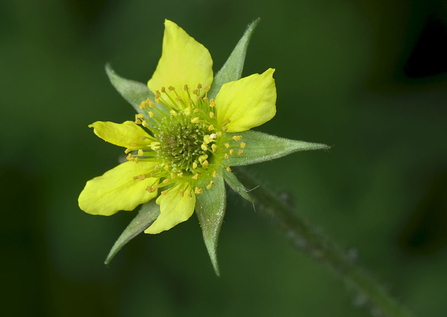
wood avens by Eden Jackson
Wood avens
Look for wood avens along hedgerows and in woodlands. Its yellow flowers appear in spring and provide nectar for insects; later, they turn to red, hooked seedheads that can easily stick to a passing animal.
Scientific name
Geum urbanumWhen to see
May to AugustSpecies information
Category
Statistics
Height: up to 50cmConservation status
Common.
About
A common plant of hedgerows and woodlands, wood avens is also known as 'herb bennet'. Small, quickly drooping, yellow flowers appear on slender stems from May to August and are a good source of nectar. Wood avens is also a foodplant of the caterpillars of the grizzled skipper butterfly.How to identify
Wood avens is a straggly, hairy plant that has downy, three-lobed leaves with toothed edge, and yellow flowers with five petals. The flowers appear in loose clusters and are replaced by spiky seed heads with red hooks that can easily get picked up by passing animals.Distribution
Widespread.Did you know?
It's thought that the common name 'herb bennet' arose from the medieval Latin 'herba benedicta' meaning 'the blessed herb' because the plant was widely used in herbal medicine at this time.
©Northeast Wildlife


